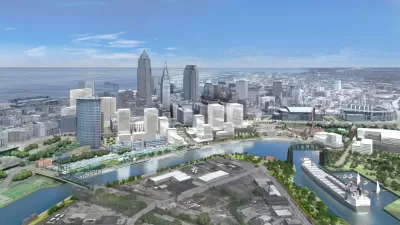It's certainly not a new idea - what's new is the current bipartisan Senate bill, cutely abbreviated as the BRIDGE Act, seeded with $10 billion of federal funds that would attract funds from the private sector to be loaned to worthy projects.
Proposed by Sens. Mark Warner (D-Va.) and Roy Blunt (R-Mo.) on Nov. 14, the Building and Renewing Infrastructure for Development and Growth in Employment (BRIDGE) Act [PDF-fact sheet] would create a $300 billion national infrastructure funding bank, writes Keith Laing.
Already the bill has drawn support from both sides of the political aisle as the press release from Sen. Dean Heller (R-Nev.) indicates.
The BRIDGE Act, introduced by lead sponsors Sens. Mark R. Warner (D-VA) and Roy Blunt (R-MO), is cosponsored by Lindsey Graham (R-SC), Kirsten Gillibrand (D-NY), Dean Heller (R-NV), Chris Coons (D-DE), Amy Klobuchar (D-MN), Roger Wicker (R-MS), Claire McCaskill (D-MO) and Mark Kirk (R-IL).
So, how to convert that $10 billion in seed funding to $300 billion? According to a statement by Sen. Warner, "this proposal creates smart new tools to help our states and localities unlock billions of dollars in additional private investments at a time of very favorable interest rates."
Laing clarifies (or further mystifies) by explaining that "(t)he infrastructure funding would be used as leverage to lure private sector investments that could reap as much as $300 billion in new transportation projects, according to Warner's office."
Laing references a 2011 bipartisan senate bill that attempted the same goal. "The Kerry-Hutchinson proposal called for created a $50 billion infrastructure bank, but the legislation ran into opposition from Republicans in the House who said they would prefer to let states establish their own infrastructure banks."
While Laing doesn't indicate if that reception would change with the current bill, it's worth noting that the prior proposal was attempted before the current surface transportation legislation, known as MAP-21, passed in July, 2012.
A review of the numerous articles on this topic posted here and here found this explanation by Robert Puentes, a scholar at the Brookings Institution, on how the bank works, why the private sector would invest in it, and why the Kerry-Hutchinson bill was attracting serious attention.
"The real reason it's getting so much attention now is that it's mistakenly framed as free money, as something that, if we can't raise money other ways, if we can't raise the gas tax, can't tap general funds, let's do an infrastructure bank — that's a good idea!" Puentes states in Pacific Standard on March 24, 2011. Emily Badger further describes how the low interest loans and selective projects based on merit, not politics, would attract private funding:
But it's to help those projects that need some kind of complex funding packages put together, that have public-private partnership components — projects that are almost guaranteed to have a return on investment, as opposed to projects that have questionable merit.
FULL STORY: Senate bill revives infrastructure bank idea

Planetizen Federal Action Tracker
A weekly monitor of how Trump’s orders and actions are impacting planners and planning in America.

Restaurant Patios Were a Pandemic Win — Why Were They so Hard to Keep?
Social distancing requirements and changes in travel patterns prompted cities to pilot new uses for street and sidewalk space. Then it got complicated.

Map: Where Senate Republicans Want to Sell Your Public Lands
For public land advocates, the Senate Republicans’ proposal to sell millions of acres of public land in the West is “the biggest fight of their careers.”

Maui's Vacation Rental Debate Turns Ugly
Verbal attacks, misinformation campaigns and fistfights plague a high-stakes debate to convert thousands of vacation rentals into long-term housing.

San Francisco Suspends Traffic Calming Amidst Record Deaths
Citing “a challenging fiscal landscape,” the city will cease the program on the heels of 42 traffic deaths, including 24 pedestrians.

California Homeless Arrests, Citations Spike After Ruling
An investigation reveals that anti-homeless actions increased up to 500% after Grants Pass v. Johnson — even in cities claiming no policy change.
Urban Design for Planners 1: Software Tools
This six-course series explores essential urban design concepts using open source software and equips planners with the tools they need to participate fully in the urban design process.
Planning for Universal Design
Learn the tools for implementing Universal Design in planning regulations.
Heyer Gruel & Associates PA
JM Goldson LLC
Custer County Colorado
City of Camden Redevelopment Agency
City of Astoria
Transportation Research & Education Center (TREC) at Portland State University
Camden Redevelopment Agency
City of Claremont
Municipality of Princeton (NJ)




























